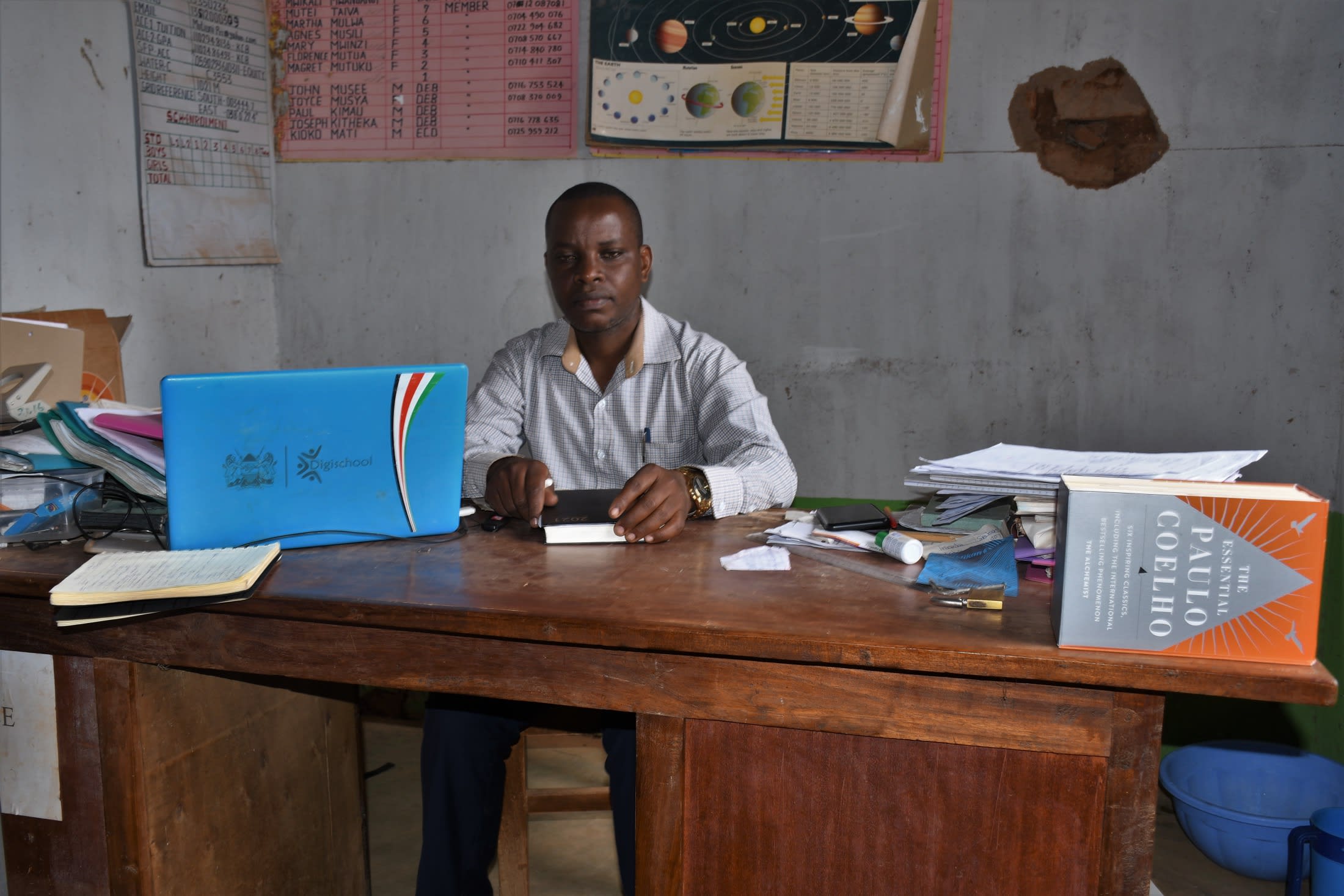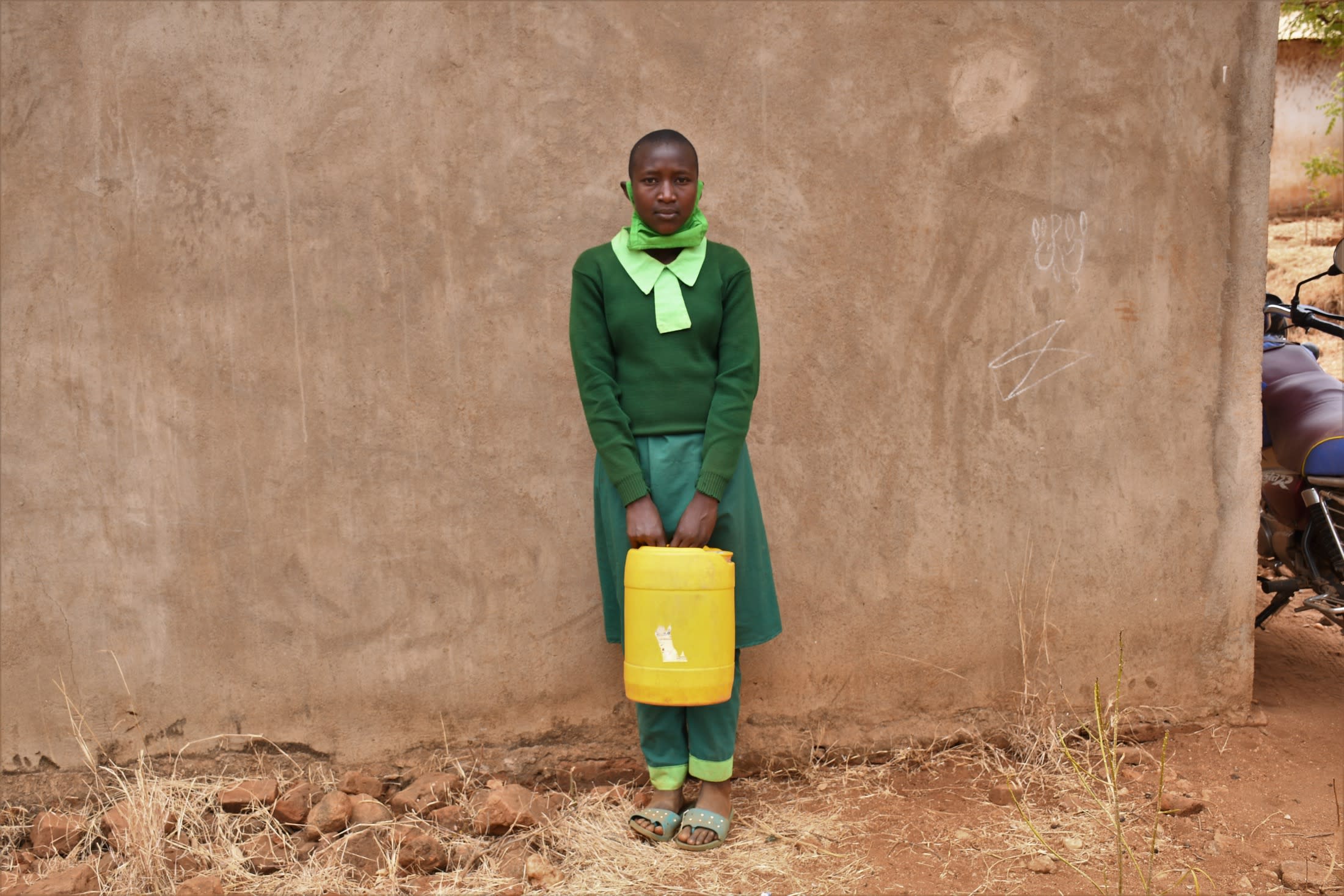Mutiuni Primary School's main water source is the Katse River, nearly 10 kilometers (6.2 miles) away. Students fetch containers full of water and carry them to school each morning along with their books.
As you can imagine, this is a tiresome and arduous task that leaves students exhausted and unable to concentrate once they finally arrive. The watering holes are often overcrowded because the entire community shares them, leading to long queues and students wasting valuable learning time. Absenteeism is also rampant as some students fail to come to school because they lack water.

All of these factors alter students' academic performance, as noted by Head Teacher Samwel Mutunga (in the photo above), 45. "The students have to embark on long walks to the river, which consumes a lot of time since the river is far away and is usually overcrowded. Students being required to deliver water to school leads to exhaustion and time wastage, which eventually leads to poor academic performance, as most of their time is spent on fetching water rather than studying."
Water from the river scoopholes is contaminated because of nearby animal and human excrement and dust, exposing the 209 students and staff to water-related infections, such as stomach pains, typhoid, and amoebas. Some scoopholes are also dangerous because they have been dug very deep and are left open.
The water that students collect cannot sustain the whole school population and must be rationed. Other tasks requiring water besides drinking must be limited, leading to poor hygiene and sanitation at the school, discomfort in the learning environment for students, and stalled construction projects.

Janet M. (pictured above), 11, commented, "I have to walk about five kilometers (3.10 miles) to school carrying water in a jerrycan every day, which leaves me too tired to concentrate on my studies. Also, I have to forego coming to school when there is no water at home to avoid punishment from the school administration."
Janet continued, "The available water is also contaminated, and I have developed stomach upsets in the past. Other factors like poor hygiene and sanitation due to water insufficiency have also made the learning uncomfortable, which has constantly led to poor performance and low grades."
The proposed 104,000-liter rainwater tank will hold more water that will last the school the entire drought period. Students will get a clean source of drinking water, enabling them to save their time and energy for improving their studies.
Rain Tank
We will build a 104,000-liter rain tank for this school, making the others look tiny in comparison. Because of how rarely it rains in Southeastern Kenya, this tank's large volume is designed to store as much water as possible during the seasonal rains, making more water available through the dry months. This water will benefit the students, teachers, and supplementary staff.
Parents will mobilize the materials needed for construction, including sand, stones, and water. They will also lend their strength and time to help with the construction. We will complement their materials with a skilled artisan to lead the project in addition to providing the tools, lumber, metal, cement, and gutter system.
As soon as the tank has time to cure, it can begin collecting rainwater for the school's use.
Training
We will train students and staff on sanitation, hygiene, and other topics for 1 day. Those in attendance will form a school health club that will promote good hygiene and sanitation practices both at school and at home. They will learn all of the steps to proper handwashing, how to treat water, and how to keep their environment clean. The school will also be taught how to best oversee and maintain their new rain tank and handwashing stations.
Handwashing Stations
A total of 3 handwashing stations will be installed upon the project's completion and before training. These are 1,000-liter plastic tanks fitted with 3 taps each, allowing 9 students to wash their hands at once. The student health club and school management will be responsible for making sure the tanks are filled with water and that a cleaning agent such as soap or ash is always available.

 Rainwater Catchment
Rainwater Catchment
 Rehabilitation Project
Rehabilitation Project
































